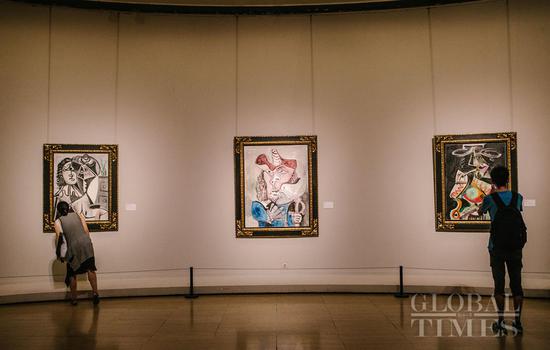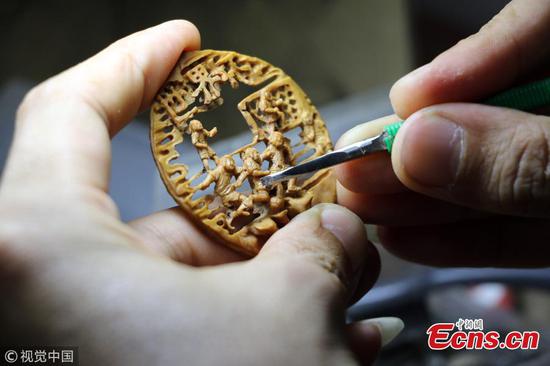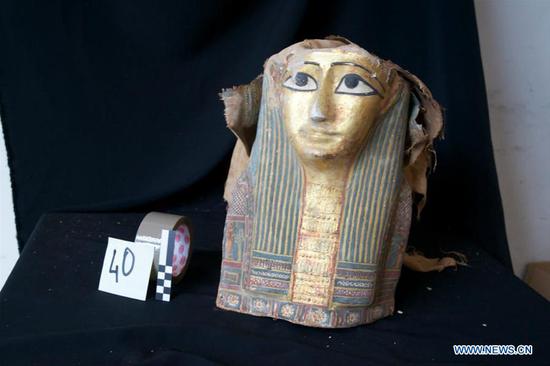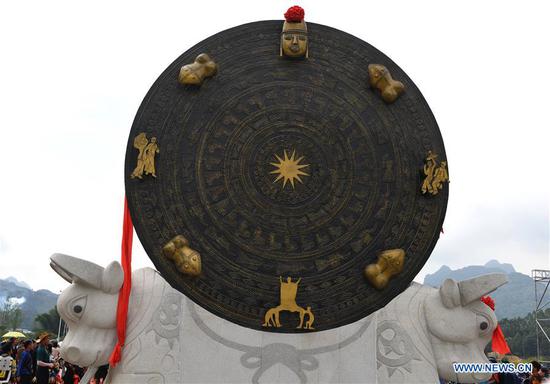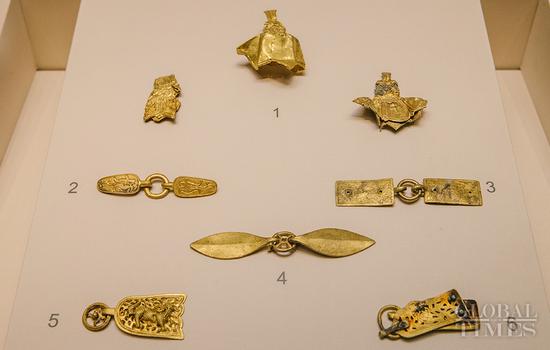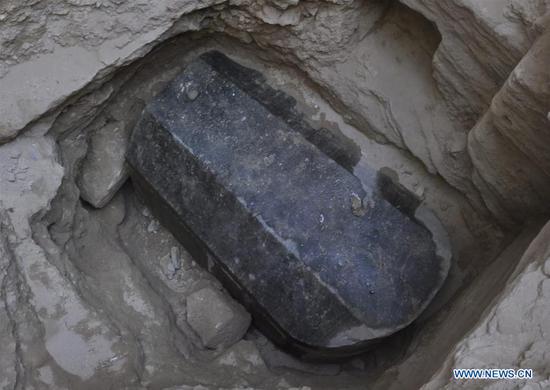
This undated photo provided by Egyptian Ministry of Antiquities shows a large black granite sarcophagus in Alexandria, Egypt. An Egyptian archeological mission discovered Sunday a tomb with a large black granite sarcophagus dating back to the Ptolemaic era in the Egyptian coastal province of Alexandria, the head of Egypt's Supreme Council of Antiquities (SCA) said in a statement. (Xinhua)
An Egyptian archeological mission discovered Sunday a tomb with a large black granite sarcophagus dating back to the Ptolemaic era in the Egyptian coastal province of Alexandria, the head of Egypt's Supreme Council of Antiquities (SCA) said in a statement.
"The black granite sarcophagus is one of the largest found in Alexandria, for it is 265 cm long, 185 cm high and 165 cm wide," said SCA chief Mostafa Waziri.
"Experts have not yet determined to whom the tomb belongs," he added.
A deteriorated alabaster bust of a man, who might be the tomb's owner, was also found inside the tomb.
The tomb was discovered during the mission's installation of sensors at a privately owned land in Alexandria's Sidi Gaber neighborhood before its owner laid down building foundations, as the Egyptian law states archeological excavation of any land before its construction.
Alexandria city is named after Alexander the Great who succeeded his father as king of Macedonia and started in 334 B.C. a long military campaign against the Persian Empire where he conquered Egypt and declared himself as king, which explains why most of Alexandria artifacts are Greek and Roman.
In the 1990s, beneath the eastern harbor area of Abu Qir Bay in Alexandria, Egypt discovered the sunken city of Cleopatra, an Egyptian ancient queen of Greek Macedonian descent who drove the merge of the Pharaonic and Greek cultures in ancient Egypt.
Last November, the SCA announced the discovery of three shipwrecks dating back to the Roman era on the seabed of the northern coastal province.













